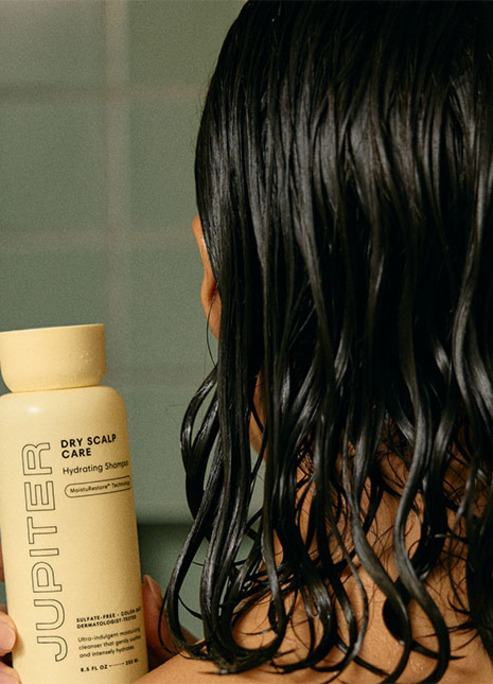
Types of Tape In Hair Extensions and How to Install Them
They are made with human or synthetic strands that are pre-taped and ready to be applied.
Tape in hair extensions are a type of semi-permanent hair extensions. They are made with human or synthetic strands that are pre-taped and ready to be applied. The tape is usually a specialized medical-grade adhesive, designed to be non-toxic, formaldehyde free, and safe on the scalp and hair.
Types of Hair Used in Tape In Hair Extensions
Tape-in hair extensions typically come in a variety of hair types, such as human hair from a variety of origins (such as European, Brazilian, Malaysian, Indian, and Peruvian) or synthetic strands.
Remy Human Hair
Remy human hair is considered the highest quality of human hair for hair extensions and wig. It is obtained from one donor or single head of hair and has not been chemically treated, which allows it to maintain its cuticle intact in a natural way. This ensures that Remy human hair is more durable and long-lasting compared to other types of human hair.
Non-Remy Human Hair
Non-Remy Human Hair is hair that has been collected from multiple sources and it is not considered to be of the highest quality. It has often been chemically treated, which removes the cuticle from the hair shaft. It may also have split ends or stray strands more frequently than Remy hair, resulting in a much lower level of durability.

Synthetic Hair Extensions
Synthetic hair extensions are usually made of synthetic materials, such as nylon or polyester. This type of hair is less durable than human hair and can become matted or tangled more easily than human hair. However, it is also the least expensive option for hair extensions. Synthetic hair extensions are the most popular choice for those looking for a low-cost temporary solution to their hair extensions.
Heat-Resistant Synthetic Hair
Heat-Resistant Synthetic Hair is a type of synthetic hair extension that has been specifically designed to be able to withstand heat from styling tools such as curling irons, flat irons, and blow dryers. It is made of a heat-resistant material, such as Kanekalon or Toyokalon, which allows it to maintain its shape and look better when using heat. It is a great option for those who want to style their extensions with heat without damaging the hair.
Installation and Application of Tape-In Hair Extensions
Tape in hair extensions are a great way to add length and volume to your hair. They are also semi-permanent, which means they will last for several weeks and can be reused if properly cared for. When installing or applying tape to extensions, it’s important to use the proper tools and techniques to ensure you get the best results and prevent any damage to your natural hair.
Prepare the Hair Extensions
Before installing tape-in hair extensions, it is important to properly prepare them. This includes washing and conditioning the hair extensions with a mild shampoo and conditioner before use, as well as carefully detangling each piece. Additionally, ensure that the adhesive on the wefts is firmly in place before beginning installation.
Section the Hair
When sectioning the hair for tape-in extensions, it is important to start at the bottom of the head and work up. This ensures that each piece of hair is adequately covered by extensions. It’s best to use clips or a comb to separate each section for easier installation. Additionally, ensuring that sections are no bigger than one inch wide will make it easier to apply the extensions and provide a more natural look.
Apply the Bottom Extension
When applying the bottom extension, it is important to ensure that the weft is completely covered by natural hair. To do this, start by taking a small section of the natural hair and use a flat-tipped comb to create an even horizontal section across the area where you would like to apply the extension. Gently brush away any excess hair and apply the extension directly onto the scalp.
Apply the Top Extension
To apply the top extension, start by taking a small section of natural hair that is slightly above where you applied for the bottom extension. Use a flat-tipped comb to create an even horizontal section and gently brush away any excess hair. Then, apply the top extension directly onto the scalp and press firmly to ensure a secure attachment.

Sandwich Method
The Sandwich Method is a technique used in the application of tape-in hair extensions. It involves sandwiching the natural hair between two pieces of weft hair extensions and then securing them in place with adhesive tape. This method helps ensure a secure attachment for the extension and prevents slipping or sliding out of place. When applying tape-in extensions using the Sandwich Method, it’s important to start at one side of the head and work your way around.
Check for Comfort and Alignment
Verified the comfort and alignment of tape-in hair extensions during the installation process by following proper tools and techniques to ensure the best results with minimal damage to natural hair. After the installation process is complete, it’s important to check that the extensions are securely attached and comfortable. Also, ensure that the extensions are aligned correctly and don't look out of place.
Trim and Blend
Trimming and blending tape-in hair extensions is essential for achieving a natural look. Start by trimming the ends of the extensions to match the length of your natural hair. This will help create a seamless blend between your real hair and the extensions. If desired, you can also use thinning shears to soften the ends of the extension pieces for a more natural look.
Style and Finish
When styling tape in hair extensions, it is important to use a heat protectant before applying any heat-styling tools. Additionally, avoid using high-heat settings to help prevent any damage to the extensions. When styling, it is best to begin at the ends of the hair and work your way up. This will help reduce tangles and create a smooth look. Once you have finished styling, use a hairspray or serum to help keep the style in place.
Tape-in hair extensions are an easy and effective way to add length, volume, and color to your hair. However, it is important to follow proper installation techniques to ensure that they last and look their best.











